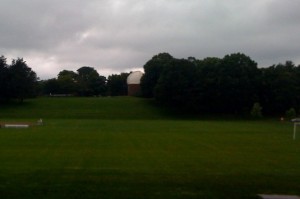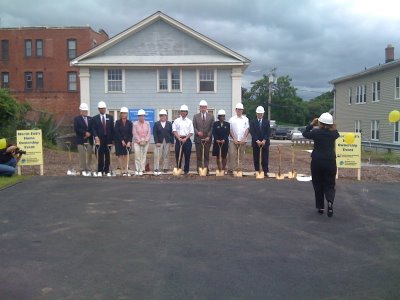In my previous post, I described some of the steps Wesleyan is taking toward what I called “sustainable affordability.” One step is almost uncontroversial: we will no longer raise tuition rates in excess of inflation rates. Over time, this should mean that we will no longer be among the most expensive schools in the country. Some commentators have suggested that we more aggressively charge those families who can most afford to pay. I don’t think this is a serious option. We can (and we will) ask families with economic capacity to contribute to our financial aid scholarship funds. Their philanthropy is more important than ever, but we will not build philanthropy into price.
The most controversial step I described was being only as “need-blind” as we can afford to be. Many people believe that being “need-blind” is a sign of quality — educational quality and moral quality. As I’ve said before, we could be “need-blind” and spend less money on scholarships. It’s easy for schools to choose metrics of student quality (like SAT scores) that correlate with wealth. They can say they are “need-blind” while having a more homogeneous student body. Schools can also remain “need-blind” by increasing loan levels or expected parental contribution. We will not do this.
This is what we will do: Wesleyan will continue to seek a diverse student body, continue to meet full need, and continue to hold down student debt. We will continue actively to seek students who have great academic potential and very high need — families whose incomes make them eligible for our no-loan program, students who will receive full scholarships. And we will strive to find ways to make Wesleyan more affordable to middle class students. I am grateful for the suggestions in this regard in the blog comments, and we will study them and other ideas throughout the next academic year. These will be discussed on campus and with alumni in various parts of the country. Following up on suggestions in the comments, we will be making more of our financial planning documents available on the web as updates to the Wesleyan 2020 site.
The third step I described in my previous post is a three-year option for the BA. This idea has generated considerable discussion across the country. The three-year option may be an affordability choice for many students. It does not require overloads, nor does it steer folks to particular majors or jobs. The three-year option is not, though, for everyone, nor is it a form of financial aid. It’s a choice of how to get a great education in a more affordable way.
I want to be clear: As we increase our endowment levels, we will spend even more money on financial aid. Financial aid endowment and endowing key academic programs are the highest priorities for our fundraising efforts. Our generous parents and alumni have been donating tens of millions of dollars so that we can continue to meet the full economic needs of a very significant percentage of the Wesleyan student body. Labels aside, we are more dedicated than ever to supporting our students so that they can get the most out of their education. Labels aside, we will continue to use a holistic admissions process that strives to create a diverse class of talented students from different parts of the world, from all walks of life.
We will not pursue economic policies that undermine the long-term viability of alma mater. We want our university to be stronger over time, not for the sake of our endowment, but so that future generations can benefit from a Wesleyan education. Financial Aid — now more than ever.
We have been discussing these ideas about sustainable affordability over the last year with students, faculty, alumni and staff, and we will continue to gather ideas about how best to proceed. We do not expect these to be easy conversations. These questions can look very different from different perspectives. But to all of you who care deeply about Wesleyan, be assured that we will redouble our efforts to find ways to hold down costs, enhance diversity and increase support for scholarships. We want to increase access to Wesleyan not just for the near term, but also for the long term. Financial aid — now more than ever. Wesleyan — now more than ever.



 As is often the case, as we think about new programs we are also reminded of our past. In the final days of the fiscal year Wesleyan was the beneficiary of a significant bequest. John Pallein graduated with an English major in 1950, and spent the next two years in the US Army, serving in Japan and Korea. He began working as a technical writer, first for Pratt and Whitney and later for Beckman Instruments. I met John in California just before I moved back to Middletown, and it was clear that he felt a strong loyalty to alma mater. We talked about his work in the President’s House for Victor Butterfield’s family, and his enthusiasm about recent Wes students he had met. A gentle and amiable person, we spoke about the difficulties of leaving the West Coast after so many years. John had settled in one of the most beautiful spots I’d ever seen, Dana Point, but it was clear that Middletown was a locus of cherished memories for him. John’s bequest of more than $3 million will endow financial aid packages for Pallein Scholars in perpetuity, so that deserving students can also have access to the kinds of transformative educational experiences that served him so well.
As is often the case, as we think about new programs we are also reminded of our past. In the final days of the fiscal year Wesleyan was the beneficiary of a significant bequest. John Pallein graduated with an English major in 1950, and spent the next two years in the US Army, serving in Japan and Korea. He began working as a technical writer, first for Pratt and Whitney and later for Beckman Instruments. I met John in California just before I moved back to Middletown, and it was clear that he felt a strong loyalty to alma mater. We talked about his work in the President’s House for Victor Butterfield’s family, and his enthusiasm about recent Wes students he had met. A gentle and amiable person, we spoke about the difficulties of leaving the West Coast after so many years. John had settled in one of the most beautiful spots I’d ever seen, Dana Point, but it was clear that Middletown was a locus of cherished memories for him. John’s bequest of more than $3 million will endow financial aid packages for Pallein Scholars in perpetuity, so that deserving students can also have access to the kinds of transformative educational experiences that served him so well.